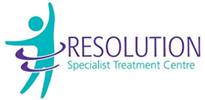Have you ever heard of dental monitoring?
It is a relatively new technology that dentists use to keep track of the progress and health of their patient’s teeth. It is a simple, non-invasive, and convenient way for dentists to ensure they provide the best care possible.
Dental monitoring is an innovative way to take the guesswork out of keeping your teeth and gums healthy. This technology enables you to monitor your oral hygiene remotely and receive real-time feedback on the health of your teeth and gums.
This blog will explore some of the top benefits of dental monitoring that make it a valuable tool for patients needing greater dental care. We will discuss how this technology can help you keep a watchful eye on your dental health and help your dentist customise a treatment plan tailored to your specific needs.
What is Dental Monitoring?
Dental monitoring is a brand-new, cutting-edge technique for remotely managing and overseeing patient dental care.
It utilises a mobile application. This dental monitoring system was created in France to create artificial intelligence (AI) that could follow dental movements and identify different dental structures and disorders such as cavities, gingivitis, and gum recessions.
Doctors can now remotely monitor patients receiving Invisalign treatment thanks to this advancement. Invisalign aligner images must be accurately evaluated to determine whether the patient’s teeth are moving in the desired direction.
What is the Process of Dental Monitoring?
You must go for an orthodontic assessment if you decide to proceed with orthodontic treatment.
The extent of the patient’s orthodontic treatment requirements and the potential benefits of various appliances must be known to the orthodontist. Your orthodontist will give the patient their initial set of aligners and set them up with dental monitoring if they decide to move forward with Invisalign, a system of almost invisible aligners that straighten teeth.
On their smartphone, they have an app for dental monitoring. They will be expected to frequently upload pictures of their teeth via the app, which we may view. The orthodontist evaluates the photos they take to verify that the patient’s teeth are shifting by their treatment strategy.
Because of this amazing tracking system, the course of treatment is determined more by the patient’s biology and level of compliance than by a set timetable. Additionally, it may hasten the course of treatment.
Advantages of Using Dental Monitoring
The most significant advantage of dental monitoring is that it allows the doctor and the patient to avoid unnecessary appointments.
The system allows the doctor to evaluate the patient’s progress and address any issues that arise through remote management techniques. Every Invisalign patient can use the dental monitoring app to upload their dental photos once a week.
This dental monitoring app informs patients whether they can switch to the next aligner. This tool makes it easier for patients to understand their dental care plan and allows dentists to adjust their treatment plans accordingly.
It detects poor wear and sends an automatic message without requiring their approval. Reports sent by the system allow dentists to identify any problem areas before they occur and make the necessary adjustments to treat their patients’ conditions accordingly.
This kind of technology is game-changing over time, as it removes the guesswork needed to make decisions about your teeth and their health. The technology is so advanced that the dental monitoring system can even detect a slight unseating of the aligner.
Other advantages of using dental monitoring include:
Improved Patient Satisfaction
One of the main benefits of dental monitoring is improved patient satisfaction due to the personalised care it provides.
With this technology, dentists can monitor the progress of every individual and adjust treatment plans based on the results. Additionally, patients feel more comfortable as they are constantly informed about their condition and aware of any changes in their oral health over time.
Better Outcomes
By using dental monitoring, dentists can also achieve better treatment outcomes for their patients by closely tracking the progress of each case and making timely adjustments as needed.
This allows them to ensure that treatments are effective and that potential risks are minimised or eradicated. In addition, it ensures that the most cost-effective treatments are implemented, saving patients time and money in the long run.
Fewer Missed Appointments
Another advantage of dental monitoring is that it reduces missed appointments. It can alert dentists when an appointment has yet to be scheduled promptly or if there have been significant changes in a patient’s condition since their last visit.
By keeping track of each case over time, dentists can ensure that patients receive appropriate treatment within a proper time frame, significantly improving overall health outcomes while reducing missed appointments.
More Accurate Diagnoses
Finally, dental monitoring helps dentists make more accurate diagnoses since they can access detailed information about each individual’s oral health over time rather than relying solely on one-time exams or visual observations during office visits alone.
By regularly tracking data points such as gum recession or plaque build-up, dentists can detect even subtle changes that lead to more precise diagnoses, which will ultimately result in higher success rates for treatments administered over time and greater overall patient satisfaction with their experience at the dentist’s office.
So as you can see, the benefits are vast, and there are many reasons why this technology is so important for dental patients.
Conclusion
Dental monitoring is a ground breaking technology that can help patients save time, missed appointments, and money. This innovative technology allows the dental community to monitor their patients’ progress easily.
Dental monitoring provides patients with a convenient way to create a meaningful relationship with their doctor by facilitating communication between both parties. It is an excellent tool that makes it easier to create the best treatment plans for your unique oral health needs.

